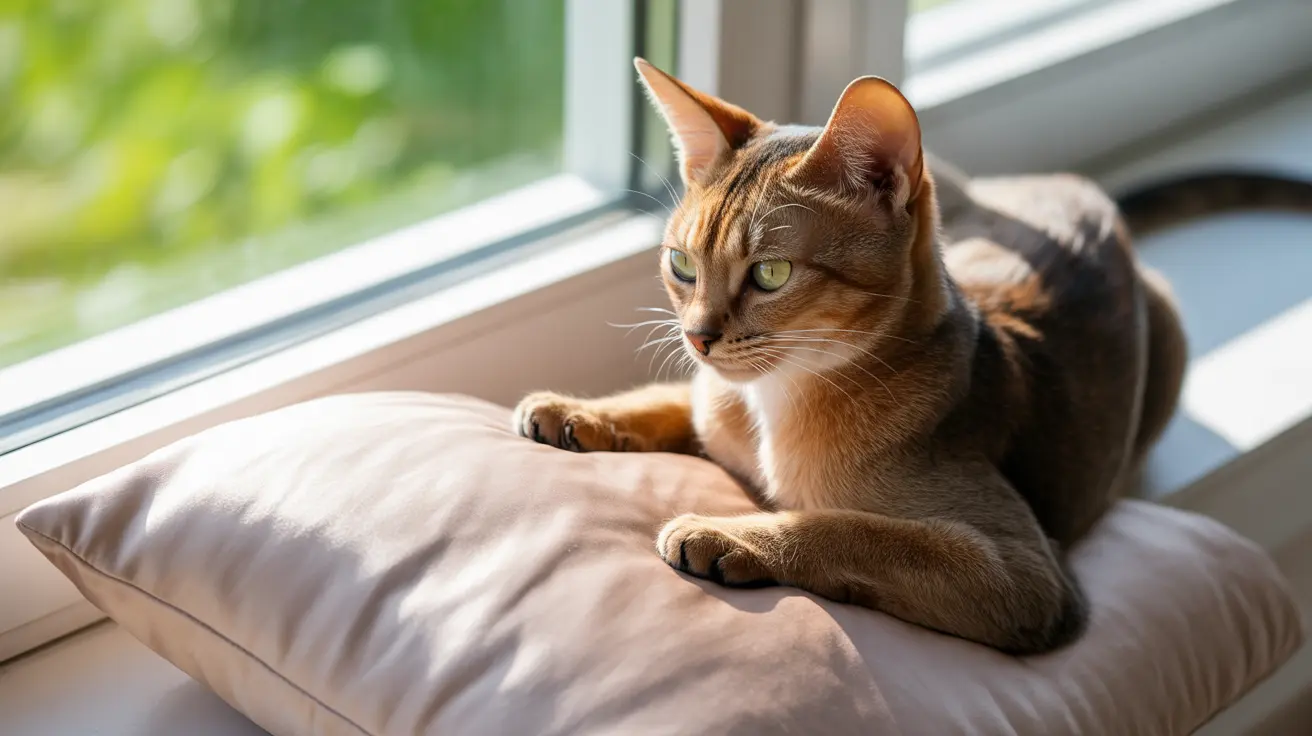The Appeal of Silk to Cats
Cats are naturally drawn to certain textures and surfaces, and silk often catches their attention. The smooth, cool texture of silk can be particularly appealing during warm weather, making it an attractive lounging spot. Many cats show a natural inclination toward silk's sleek surface, especially for napping or gentle kneading.
However, this attraction comes with important considerations. While cats may enjoy silk's texture, their sharp claws and natural behaviors can quickly damage this delicate fabric. Understanding this dynamic is crucial for making informed decisions about incorporating silk into a cat-friendly home.
Silk's Properties and Cat Interactions
Silk possesses several characteristics that influence how cats interact with it:
- Temperature regulation properties that keep the surface cool
- Smooth texture that some cats find irresistible for lounging
- Natural fiber composition that allows breathability
- Delicate weave that's highly susceptible to claw damage
These properties make silk both attractive and potentially problematic in households with feline residents. The fabric's cooling effect can make it particularly appealing to cats seeking comfort, especially during warmer months.
Practical Considerations for Cat Owners
Durability Concerns
Despite its luxury status, silk is one of the more fragile natural fibers. Cat claws can easily snag and tear silk fibers, creating runs and permanent damage. Even gentle kneading behavior can compromise the fabric's integrity over time.
Hair Resistance
Interestingly, silk's smooth surface generally resists cat hair accumulation better than many other fabrics. However, static electricity can sometimes cause hair to cling, making maintenance more challenging than expected.
Alternative Options
For cat owners who love the look and feel of silk but worry about durability, several alternatives exist:
- High-quality microfiber with a silk-like finish
- Synthetic silk alternatives
- Dedicated "cat-safe" zones with more durable fabrics
Managing Silk in a Cat-Friendly Home
If you're determined to incorporate silk into your cat-friendly home, consider these strategies:
- Place silk items in areas your cat can't easily access
- Use protective covers when cats are present
- Maintain regular grooming routines to minimize loose fur
- Consider silk accents rather than large pieces
Frequently Asked Questions
Do cats like silk fabric for sleeping or lounging?
Yes, many cats are attracted to silk's smooth, cool surface for sleeping and lounging, though individual preferences vary. The temperature-regulating properties of silk can make it particularly appealing during warmer weather.
Is silk a good fabric choice for cat owners to minimize fur on clothing and furniture?
While silk naturally resists cat hair due to its smooth surface, it's not ideal for cat owners due to its vulnerability to claw damage and potential static issues that can attract fur.
How does silk compare to other fabrics in resisting cat hair and claw damage?
Silk performs well in resisting cat hair but ranks poorly in durability compared to more robust options like microfiber, leather, or tightly woven cotton.
What are the risks of using silk upholstery or clothing around cats?
The main risks include permanent claw damage, snags from casual contact, and potential destruction from kneading behavior. Silk's delicate nature makes repairs difficult or impossible.
How can I care for silk fabrics to reduce static cling and cat hair attraction?
Use anti-static sprays specifically designed for delicate fabrics, maintain appropriate humidity levels, and regularly clean silk items with appropriate methods to minimize static buildup.
Conclusion
While cats may indeed be attracted to silk's smooth, cool surface, the practical challenges of maintaining silk in a cat-friendly home often outweigh the benefits. For most cat owners, choosing more durable, pet-friendly fabrics while reserving silk for protected spaces or special occasions proves to be the most practical solution.






